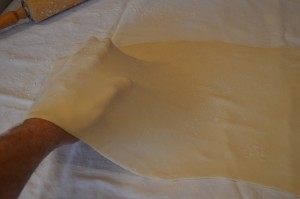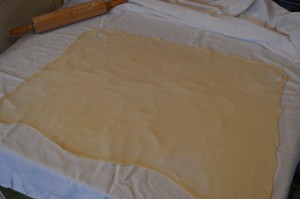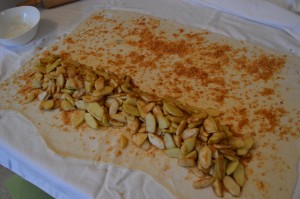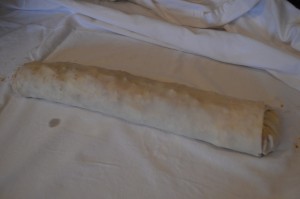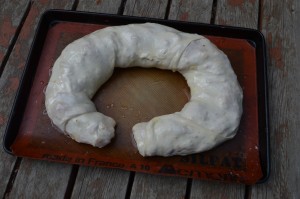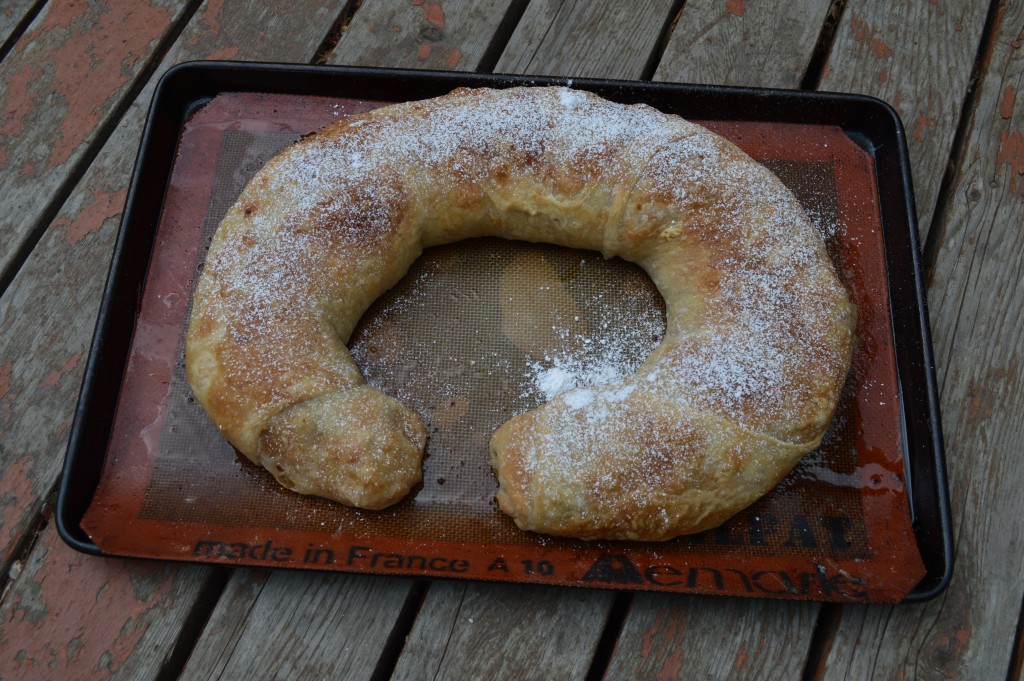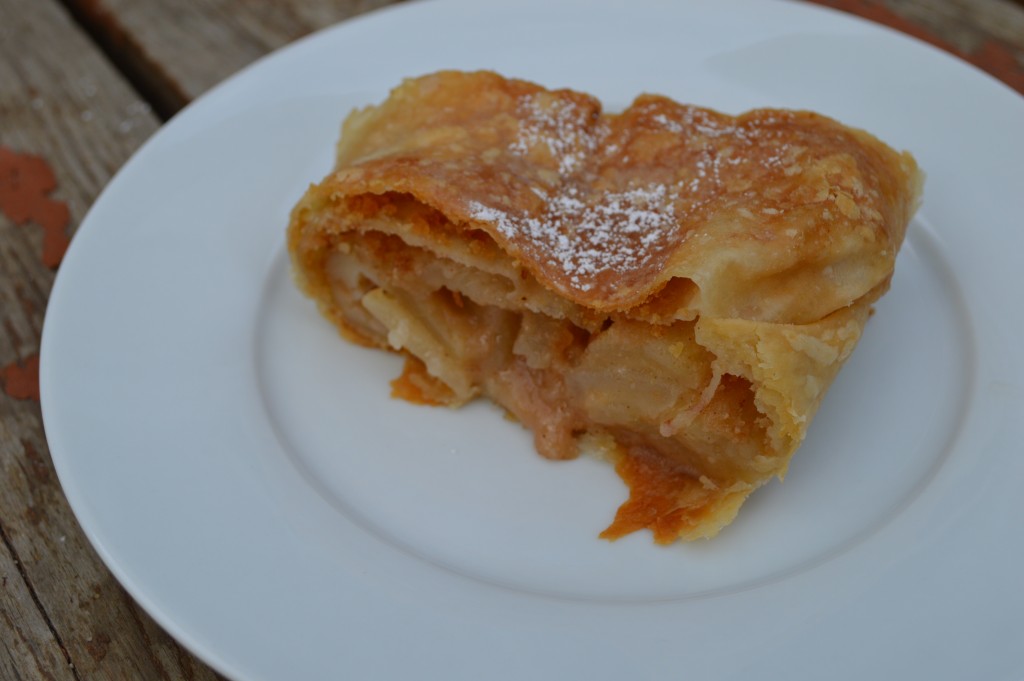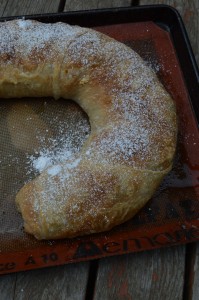 The most common form of strudel in North America is puff pastry filled with sticky jam or compote, the final product very similar to a turnover or a chausson.
The most common form of strudel in North America is puff pastry filled with sticky jam or compote, the final product very similar to a turnover or a chausson.
The original strudel, the Viennese strudel, is a different beast entirely.
Austrian strudel is made with a simple dough consisting of flour, salt, water, and vegetable oil. High protein flour is used, and the dough is mixed extensively so that there is intensive gluten development. This allows the baker to stretch the dough until it is so thin it is almost transparent. The expression in Austrian kitchens is that the dough should be thin enough that you could hold the dough over a newspaper and read the text through the dough. In concept the dough is similar to phyllo, though the finished baked goods that the two doughs make differ greatly.
A dough that has been stretched so thin must be layered several times for the pastry to have any structure. With phyllo, the baker stacks a few sheets of the dough, separating each with a layer of butter. During baking the water content of the butter turns to steam and keep the layers of dough separate. The butter also aids in the browning of the pastry.
With strudel a similar effect is created not by stacking sheets of dough, but by spreading butter over a single sheet and then rolling the sheet around itself a few times. Since the dough is so delicate, the traditional method is to stretch the dough out on a table cloth, add the filling, then lift the tablecloth so that the filled pastry rolls away from the baker.
When prepared properly and eaten fresh, strudel is a very unique pastry. I compare the preparation of the dough to phyllo, but the eating experience is completely different. Baked phyllo is delicate like thinnly blown glass: it is brittle, and fractures if you press on it. Strudel dough is delicate and slightly crisp, but also has a little bit of give to its structure. It is firm and crisp but also slightly yielding and pliable.
How this preparation ended up as a puff pastry turnover, I have no idea.
Apple Strudel
Dough Ingredients
- 225 g bread flour
- 4 g kosher salt
- 195 mL water
- 35 mL canola oil
- 1/2 tsp apple cider vinegar
Filling Ingredients
- 900 g apple, peeled, cored, quartered, and sliced into pieces not exceeding 1/4″ thickness
- 240 g dark brown sugar
- 2 tbsp rum
- 1/2 tsp ground cinnamon
- 360 mL toasted breadcrumbs
- 450 g unsalted butter, melted
Combine all of the dough ingredients in the bowl of a stand mixer. Mix with a dough hook on high speed for 10 minutes. This is a very slack dough. It will pool on the bottom of the mixer bowl. After mixing, cover the dough with plastic wrap and let rest in the fridge for several hours, or overnight.
Once you are ready to stretch the dough, rub flour into a clean tablecloth.
Stretch the dough until it is extremely thin. The recipe above should be able to be stretched into a sheet that is 2′ x 3′. Most bakers use the back of their hand to do this.
The stretched dough:
Brush the entire surface with melted butter, then generously sprinkle the toasted breadcrumbs. The breadcrumbs help keep the layers of dough separate. Lay out the apple mixture in a line along the 3′ edge closest to you.
Lift the edge of the tablecloth closest to you so that the apples fall away from you and roll themselves in dough multiple times.
Now you have to get this two foot long pastry onto a tray somehow. You may need an extra set of hands to accomplish this. You can curl or snake the strudel to fit it onto your bake sheet.
Let stand to cool before cutting. Service with whipped cream.
